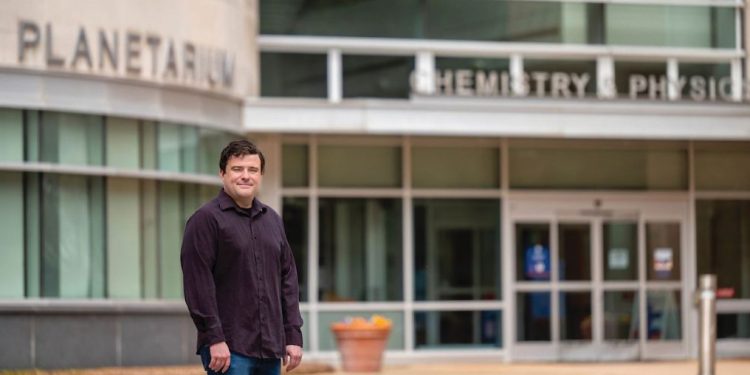A space physicist at The University of Texas at Arlington will play a key role in NASA’s Geospace Dynamics Constellation (GDC) mission.
GDC is a coordinated group of satellites that will provide the first direct global measurements of the region of space enveloping earth known as the ionosphere and thermosphere (I-T) region, according to a NASA press release.
Rick Wilder, assistant professor of physics, will be the lead scientist for an instrument known as the Atmospheric Electrodynamics probe for THERmal plasma (AETHER). AETHER will measure electron density and temperature, allowing researchers to describe the complex nature and structure of the ionosphere. The team’s goal is to understand phenomena that contribute to space weather and its effects on human activity.
When solar flares collide with earth’s atmosphere, the exchange of energy can disrupt satellite operations, communication signals and electrical grids. Changes in the density of the ionosphere can interrupt global positioning systems, which affect navigation for a variety of vehicles.
“Transcontinental communications and satellite signals rely on stable conditions within the earth’s upper atmosphere,” Wilder says. “Understanding the I-T region’s variability and potential for disturbances will allow scientists to develop methods to mitigate negative effects on human activities.”
The investigation team is led by Laila Andersson, principal investigator and a space plasma researcher at the Laboratory for Atmospheric and Space Physics at the University of Colorado. Wilder will work directly with Andersson to define the investigation’s science objectives and oversee the team’s publications to report its findings. Under Wilder’s supervision, a UT Arlington graduate student will assist with data analysis for the investigation.
Wilder is the second UT Arlington faculty member to participate in GDC. NASA named Yue Deng, UT Arlington distinguished professor of physics, as one of the mission’s interdisciplinary scientists. Deng’s team will support GDC with state-of-the-art physical models and ground-based operations, which are important for successful launch, operations and closure of the mission.
















